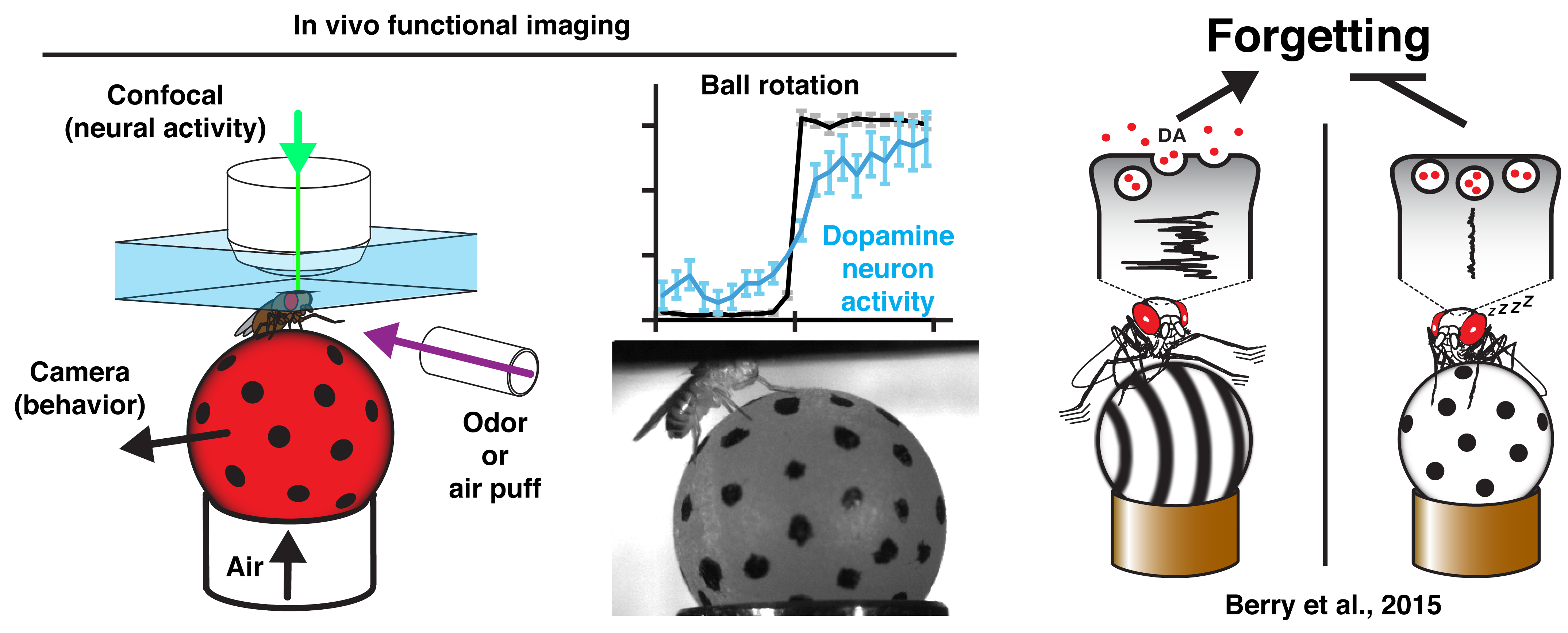Dopamine based plasticity underlying memory formation and forgetting
Decades of research has made clear that a large L-shaped neural structure located in the central brain of fruit flies called the Mushroom bodies (in yellow above) is the critical nexus for forming, storing, and retrieving associative memories. Importantly, specific dopaminergic circuits project their axons to the Mushroom body neuropil where they release dopamine to modulate memory and behavior. Our research has revealed that these dopamine circuits not only function to form memories during learning, but also weaken and update them during active forgetting (Berry et al., 2012; 2014). We have shown that these bi-directional effects on memory occur through distinct dopamine receptors, Dop1R1 and Dop1R2, the former critical for learning and the latter for forgetting. Furthermore, we have also shown that dopamine neurons modulate learning and forgetting by bi-directionally modulating synaptic connectivity of synapses of circuits involved in memory retrieval (Berry et al., 2018). The Berry lab is currently interested in the mechanisms by which dopaminergic system modulate memory at all levels, ranging from circuit mechanisms, cellular physiology, and DopR protein interaction networks.
Sleep and arousal modulate dopaminergic plasticity and forgetting

Our lab utilizes cutting-edge in vivo functional imaging approaches to connect behavioral states and actions to neural activity and physiology. Using this technique we demonstrated that specific dopaminergic circuits responsible for both learning and forgetting had ongoing Ca2+ activity in awake and behaving animals that likely drives the degradation of memories after learning via active forgetting (Berry et al., 2012). Moving this research forward, we went on to show that this dopaminergic forgetting signal was temporally modulated by behavioral states (Berry et al., 2015). Remarkably, we showed that driving animals to sleep, via pharamacology or thermogenic sleep circuit stimulation, blocked this dopaminergic activity and slowed down forgetting of memories. Conversely, arousing flies through aversive mechanical stimulation increased the activity in these dopaminergic circuits which led to increased rate of forgetting. This demonstrated a circuit mechanisms that connects the behavioral state of an animal after learning to how well they retain memories, and thus represents a model for retroactive interference from psychology literature. The Berry lab is currently interested in how behavioral states like sleep interface with memory formation and storage using advanced imaging techniques.
